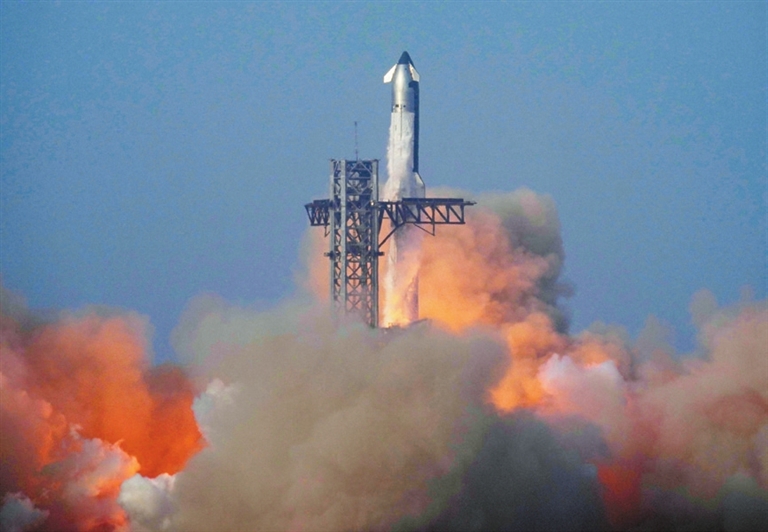
AFTER back-to-back upper stage failures in January and March, Elon Musk’s SpaceX launched another Super Heavy-Starship rocket Tuesday on the program’s ninth test flight, but ran into fresh problems with both stages that prevented controlled descents to splashdown. Sometime more than 40 minutes into the flight, SpaceX indicated that it had lost contact with the Starship and that the capsule may have been destroyed while attempting reentry. “Starship experienced a rapid unscheduled disassembly,” SpaceX posted to X. “Teams will continue to review data and work toward our next flight test.” The Super Heavy first stage, following a deliberately steeper, more stressful descent trajectory toward splashdown near the Texas Gulf Coast, suffered a failure at the moment its engines reignited for what would have been a relatively gentle splashdown. SpaceX confirmed the stage had been lost, but given the extreme nature of the testing, the loss was not an out-of-the-blue surprise. The Starship upper stage, meanwhile, managed to make it into its planned sub-orbital trajectory after an apparently flawless performance from its six engines. But a few minutes later, a door on the side of the rocket failed to open, preventing the planned deployment of simulated Starlink satellites. With that test deferred to a future flight, SpaceX engineers hoped to reignite a single Raptor engine to test its start-up capability in space. But an apparent propellant leak put the spacecraft into a slow spin that ruled out a controlled reentry and splashdown. The huge rocket’s launching, known as Integrated Flight Test 9, got underway with a ground-shaking liftoff at 7:37 p.m. EDT from SpaceX’s sprawling Boca Chica, Texas, manufacturing and flight facility — Starbase — on the Texas coast. The mission featured the first use of a recycled Super Heavy first stage, which flew itself back to capture by giant mechanical arms on the launch tower during the program’s seventh test flight in January. For the program’s latest launch, the Super Heavy, powered by 33 methane-fueled Raptor engines generating up to 16 million pounds of thrust, followed the same flight plan as previous missions, propelling the Starship upper stage out of the thick lower atmosphere on an easterly trajectory toward the Straits of Florida. Equipped with six Raptors of its own, the 48.8-meter-long Starship separated from its booster about two and a half minutes after liftoff, heading for a suborbital trajectory carrying it toward a planned vertical splashdown in the southern Indian Ocean. The Super Heavy, meanwhile, used a different method for flipping around for the trip back to the launch site in a bid to save propellants. It was also programmed to fly a much steeper descent than usual to learn more about the stresses it can safely endure. As a result of the high-stress tests, SpaceX targeted a splashdown in the Gulf instead of attempting a launch pad capture where critical infrastructure could be damaged in a landing mishap. The Super Heavy-Starship rocket is critical to NASA's plans to land astronauts on the moon in the next few years and to Musk’s plans to eventually send humans to Mars. NASA plans to use its own rocket and crew capsule to ferry astronauts to lunar orbit, and a variant of the Starship upper stage as a lunar lander in the agency’s Artemis program. (SD-Agencies) | 
